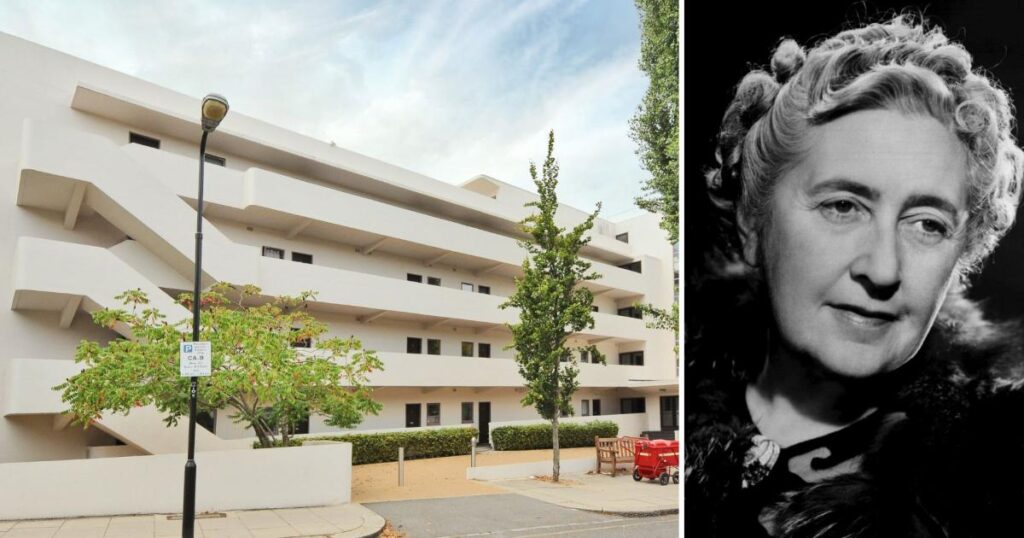Instead English Heritage has commemorated three visionary Bauhaus architects who lived in the apartment block in the 1930s.
Walter Gropius, Marcel Breuer and Laszlo Moholy-Nagy were teachers at the influential German art school which trailblazed modernist design.
The English Heritage blue plaque on the Lawn Road flats commemorates three giants of The Bauhaus art school.(Image: Isokon Gallery)
These pioneers all fled Germany when the Nazis persecuted the Bauhaus as “degenerate” – in addition, Breuer and Moholy-Nagy were Jewish.
The Lawn Road flats were designed by Wells Coates for single professionals who wanted a new minimalist way of living.
When completed in 1934 they became the country’s first block to be built in fully modern style. Breuer later converted the communal kitchen into the Isobar restaurant which became a creative hub for locals such as Henry Moore and residents including Agatha Christie.
With her London home bombed, her Devon property requisitioned by the American Navy, and husband Max posted to Egypt, the famous crime writer rented a 25 metre square flat in the flats which were advertised as the “safest building in London” because they were made from steel and concrete.
The only resident allowed a dog, she moved in with her Sealyham terrier James in 1941 and for the next six years enjoyed a prolific writing spell, producing novels, stage plays, a memoir and radio play for Queen Mary’s 80th birthday – which later became The Mousetrap.
In letters she wrote: “Coming up the street the flats looked just like a giant liner which ought to have had a couple of funnels, and then you went up the stairs and through the door of one’s flat and there were the trees tapping on the window.”
By day the trained pharmacist did her bit for the war effort with a part time job in University College Hospital’s dispensary, then returned to her flat to write, often two books simultaneously.
At night she put a pillow over her head to block out the sound of the Blitz and clutched her “two most treasured possessions” her water bottle and fur coat.
During air raids residents would gather in the sandbagged Isobar, but Christie stayed in her flat, writing in her fur coat. Later she moved into two adjoining flats knocking them together.
She later wrote: “I never found any difficulty writing during the War, as some people did; I suppose because I cut myself off into a different compartment of my mind. I could live in the book amongst the people I was writing about, and mutter their conversations and see them striding about the room I had invented for them.”
Intriguingly The Isokon drew an extraordinary community of intellectuals, artists writers, and exiles fleeing Germany – including Soviet spies.
Arnold Deutsch the controller of the Cambridge spies, Soviet agent Edith Tudor-Hart, and Ursula Kuczynski who helped recruit atomic spy Klaus Fuchs all had connections to the building, but they had moved on by the time Christie – who penned several spy mysteries – moved in.




